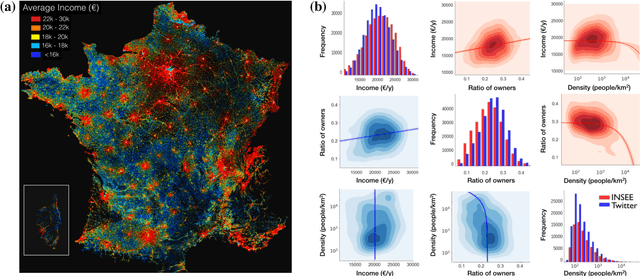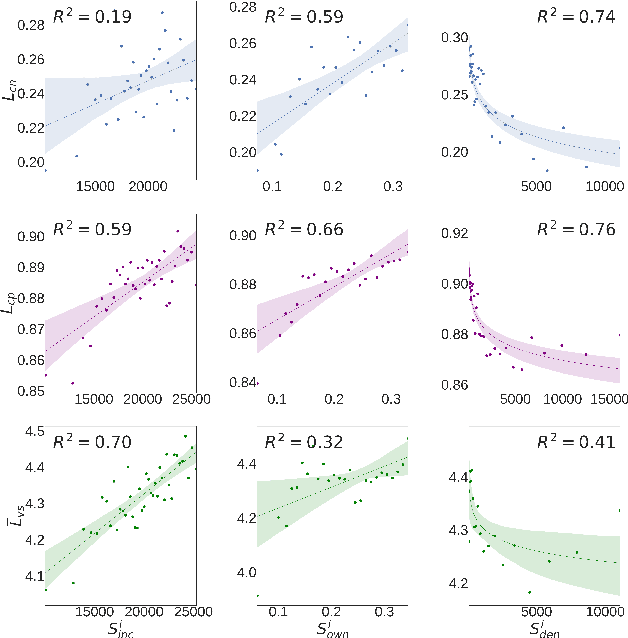Eric Fleury
Location, Occupation, and Semantics based Socioeconomic Status Inference on Twitter
Jan 16, 2019



Abstract:The socioeconomic status of people depends on a combination of individual characteristics and environmental variables, thus its inference from online behavioral data is a difficult task. Attributes like user semantics in communication, habitat, occupation, or social network are all known to be determinant predictors of this feature. In this paper we propose three different data collection and combination methods to first estimate and, in turn, infer the socioeconomic status of French Twitter users from their online semantics. Our methods are based on open census data, crawled professional profiles, and remotely sensed, expert annotated information on living environment. Our inference models reach similar performance of earlier results with the advantage of relying on broadly available datasets and of providing a generalizable framework to estimate socioeconomic status of large numbers of Twitter users. These results may contribute to the scientific discussion on social stratification and inequalities, and may fuel several applications.
Socioeconomic Dependencies of Linguistic Patterns in Twitter: A Multivariate Analysis
Apr 03, 2018



Abstract:Our usage of language is not solely reliant on cognition but is arguably determined by myriad external factors leading to a global variability of linguistic patterns. This issue, which lies at the core of sociolinguistics and is backed by many small-scale studies on face-to-face communication, is addressed here by constructing a dataset combining the largest French Twitter corpus to date with detailed socioeconomic maps obtained from national census in France. We show how key linguistic variables measured in individual Twitter streams depend on factors like socioeconomic status, location, time, and the social network of individuals. We found that (i) people of higher socioeconomic status, active to a greater degree during the daytime, use a more standard language; (ii) the southern part of the country is more prone to use more standard language than the northern one, while locally the used variety or dialect is determined by the spatial distribution of socioeconomic status; and (iii) individuals connected in the social network are closer linguistically than disconnected ones, even after the effects of status homophily have been removed. Our results inform sociolinguistic theory and may inspire novel learning methods for the inference of socioeconomic status of people from the way they tweet.
Prepaid or Postpaid? That is the question. Novel Methods of Subscription Type Prediction in Mobile Phone Services
Jun 30, 2017



Abstract:In this paper we investigate the behavioural differences between mobile phone customers with prepaid and postpaid subscriptions. Our study reveals that (a) postpaid customers are more active in terms of service usage and (b) there are strong structural correlations in the mobile phone call network as connections between customers of the same subscription type are much more frequent than those between customers of different subscription types. Based on these observations we provide methods to detect the subscription type of customers by using information about their personal call statistics, and also their egocentric networks simultaneously. The key of our first approach is to cast this classification problem as a problem of graph labelling, which can be solved by max-flow min-cut algorithms. Our experiments show that, by using both user attributes and relationships, the proposed graph labelling approach is able to achieve a classification accuracy of $\sim 87\%$, which outperforms by $\sim 7\%$ supervised learning methods using only user attributes. In our second problem we aim to infer the subscription type of customers of external operators. We propose via approximate methods to solve this problem by using node attributes, and a two-ways indirect inference method based on observed homophilic structural correlations. Our results have straightforward applications in behavioural prediction and personal marketing.
 Add to Chrome
Add to Chrome Add to Firefox
Add to Firefox Add to Edge
Add to Edge